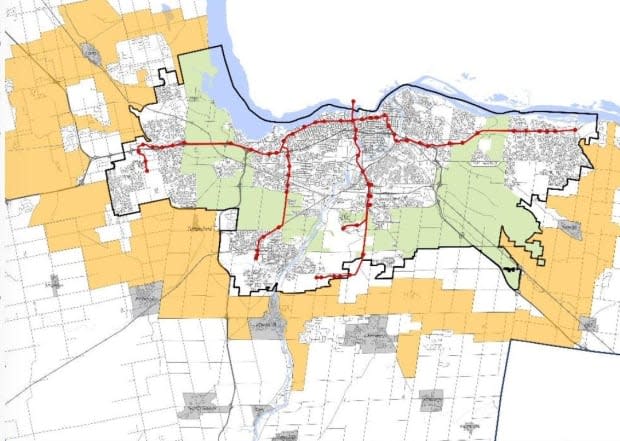Rural landowners ask city for right to develop properties
Property owners and developers whose lands didn't make the City of Ottawa's cut for being included inside a new urban boundary tried to make the case Monday for why they should be let in.
City staff released a map of which 1,011 hectares should be urbanized to meet the needs of a growing population, and nearly 50 people weighed in during a joint meeting of the planning and agricultural affairs committees.
It's the second chapter of a discussion about where Ottawa should house a projected 400,000 more residents in the next two decades, after city council decided last May it would need to convert rural land for urban development, a process that greatly increases land values.
Staff spent months scoring individual properties based on such things as proximity to transit, and the costs of servicing them with water, sewage and roads.
Golf course in, another left out
Some developers took issue that city council didn't let any agricultural land be considered.
Near Riverside South, "sterilizing" agricultural lands from development would leave fewer residents to support the future O-Train Trillium Line, said Urbandale Corporation's Marcel Dénommé.
North of Kanata, meanwhile, landowners didn't feel they should be excluded for being too close to the noise of the Department of National Defence's Connaught Range.
Cedarhill Golf and Country Club owner Noel Perera said he had plans to redevelop the money-losing golf course north of Barrhaven, and asked the committees to bring his land inside the line.
The owners of the Falcon Ridge Golf Club, on the other hand, are pleased, said their consultant Miguel Tremblay. Staff have placed their property near the future Bowesville O-Train Station inside the urban boundary.
Algonquins say their 'time is now'
The Algonquins of Ontario were the first to address councillors, and argued they should be allowed to develop a vast parcel of some 2,000 hectares in the rural south-east now, instead of waiting years longer.
They have been working with developers Taggart on a sustainable community of up to 45,000 residents they call Tewin, and have held several meetings with the city.

"Our time is now," said Lynne Clouthier, the negotiation representative for the Algonquins of Ontario. "Tewin is not just about a business deal for the Algonquins of Ontario. It is a matter of being included as people... who deserve a bright, healthy sustainable future for themselves and for future generations."
City staff felt the property would have "very high" costs for servicing with water and sewers and want to do more study of Tewin as an option for a future community between now and 2026. The Algonquins of Ontario, disagree, and say they are backed by an experienced team and shouldn't be made to wait years longer.
Mixed reviews on Gold Belt
In addition to setting a new urban boundary, city staff are looking to define a second, outer Greenbelt.
Coun. Eli El-Chantiry praised the idea as a way to protect food production and keep urban areas from encroaching on rural villages through to the end of the century.
But many delegations said the "Gold Belt" came as a surprise that could cause home owners to move beyond Ottawa's city limits.
"Are we setting us up for leapfrogging yet again? Are Carleton Place and Rockland going to send us a thank you card because now they can have that many more residents interested in coming?" asked Kevin Yemm, vice-president of land development for Richcraft.

Others welcomed the idea, but worried the Gold Belt left large gaps where tens of thousands more homes could be built.
"It's more like a very loosely fitted sash. This worries me," said Daniel Buckles of A People's Official Plan for Ottawa's Climate Emergency.
Councillors will reconvene Tuesday to ask questions of staff and vote on recommendations.
Decisions on urban boundaries can often lead to legal wrangling and drawn-out disputes at the local planning appeal tribunal, but this time, whatever council decides for setting its new urban boundary on Feb. 10 cannot be appealed.

